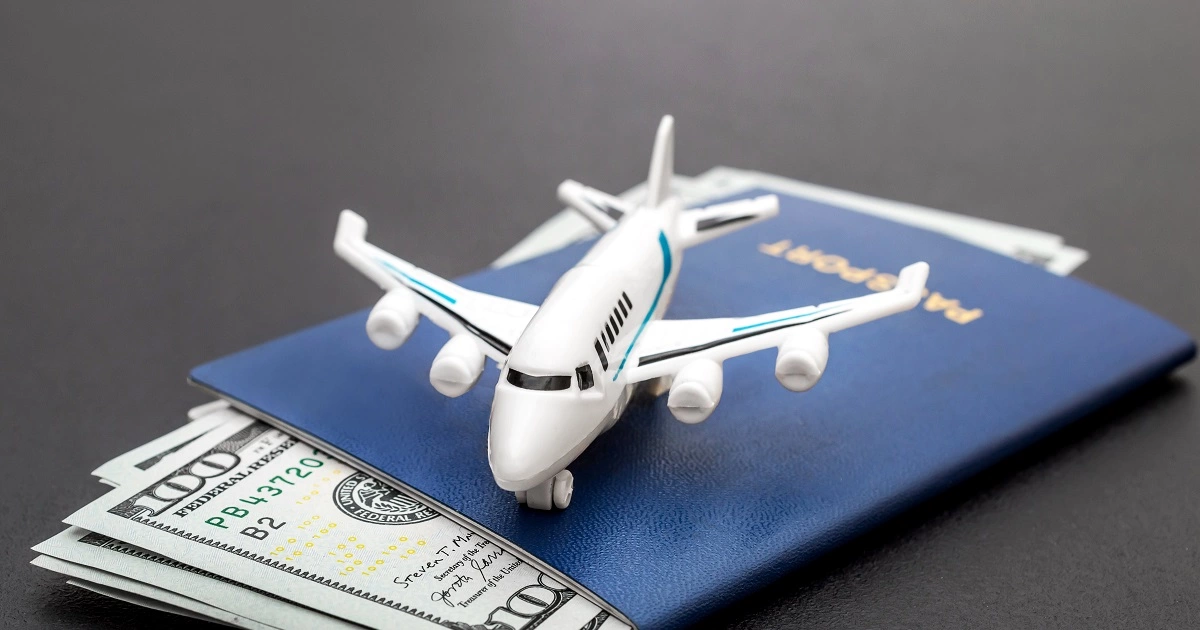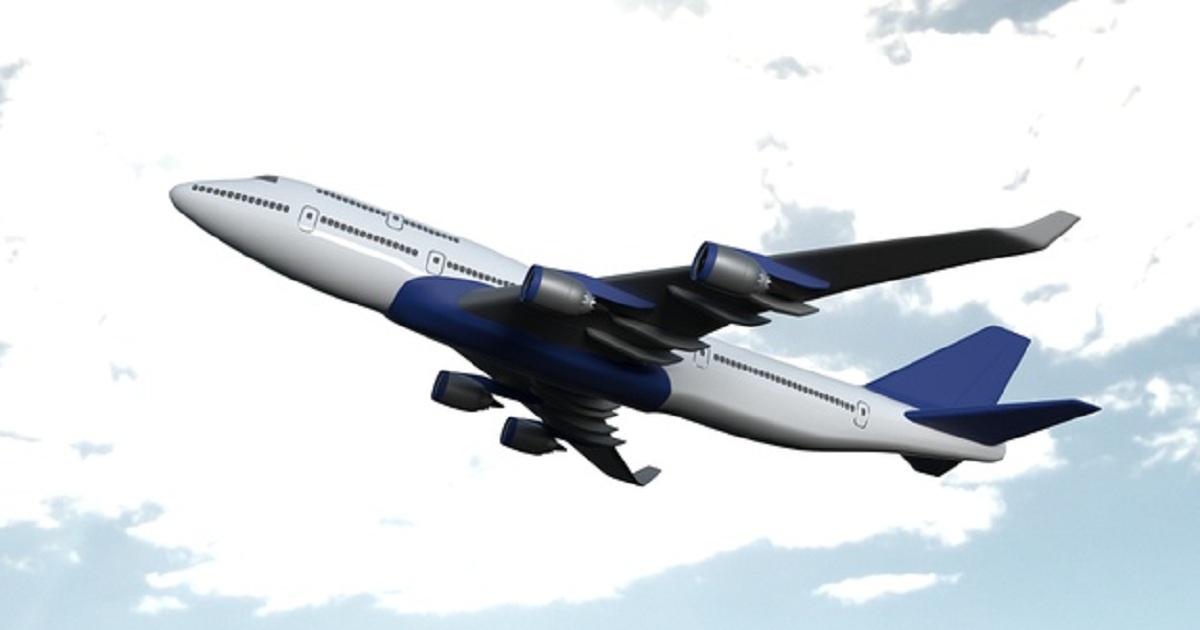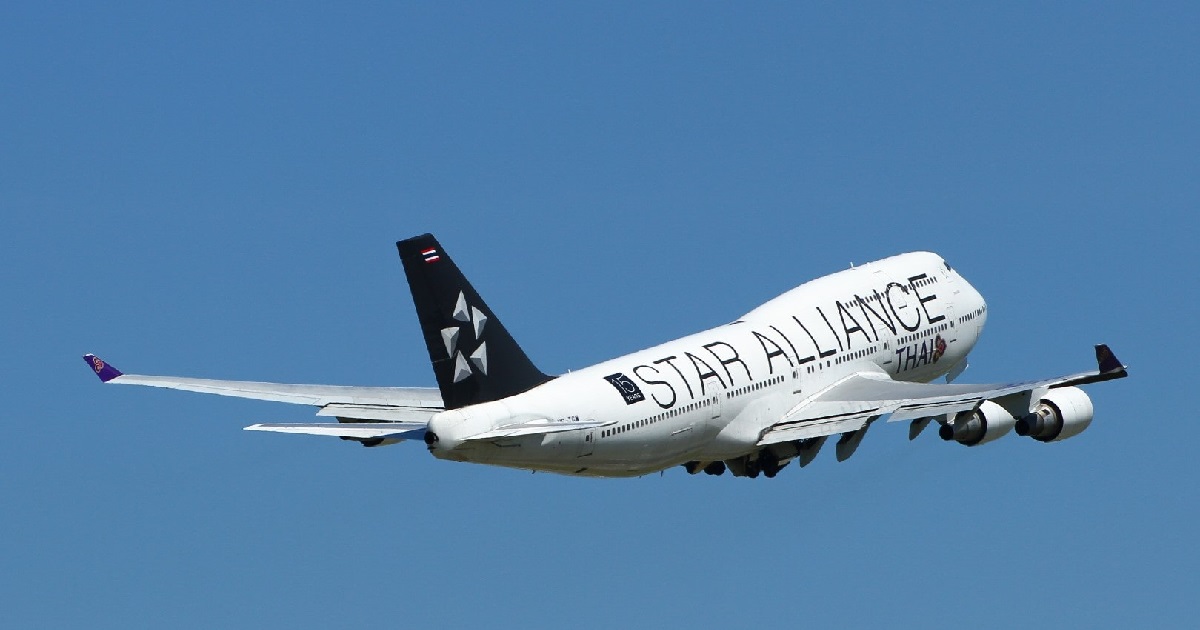
Aviation Technology
Article | June 2, 2022
A New System That Aims to Create Carbon-Neutral Aviation
Scientists have achieved an amazing breakthrough in the development of carbon-neutral fuel for the aviation industry. An aviation fuel production system that uses water, sunlight, and carbon dioxide has been put into action. Its design was published on July 20th, 2022, in the journal Joule. The dream of achieving carbon-free aviation could become a reality with this development.
“We are the first to demonstrate the entire thermochemical process chain from water and CO2 to kerosene in a fully-integrated solar tower system.” - Aldo Steinfeld, Professor, Study Corresponding Author, ETH Zurich
The aviation industry accounts for approximately 5% of the global anthropogenic emissions that contribute to global climate change. The industry heavily relies on kerosene, commonly known as jet fuel, a liquid hydrocarbon fuel derived from crude oil. There are no clean options to power commercial flights on a global scale at the moment.
Production of Synthetic Kerosene
This breakthrough, with the help of solar energy, makes it possible to produce synthetic kerosene from water and carbon dioxide instead of crude oil. The amount of CO2 emitted during kerosene combustion in a jet engine equals what is consumed during its production in the solar plant. It is what makes the fuel carbon neutral, especially if the CO2 in the air is captured and directly used as an ingredient, which could be possible in the near future.
As part of the European Union's SUN-to-LIQUID project, Steinfeld and his colleagues put forward a system that uses solar power to generate drop-in fuels—synthetic alternatives to fossil-derived fuels like kerosene and diesel. Solar-produced kerosene is consistent with the current aviation infrastructure for allocation, fuel storage, and use in jet engines. It can also combine with fossil-derived kerosene, according to Steinfeld.
High Hopes for the Future
Steinfeld and his team began scaling the construction of a solar fuel manufacturing plant at the IMDEA Energy Institute in Spain half a decade ago. The plant has 169 sun-tracking reflective panels that redirect and concentrate solar radiation into a tower-mounted solar reactor. This concentrated solar energy then powers redox reaction cycles in the reactor’s porous ceria structure, which is not absorbed but can be reused. It transforms the water and carbon dioxide into syngas, a customized mixture of hydrogen and carbon monoxide. This syngas is then injected into a gas-to-liquid converter and is finally converted into liquid hydrocarbon fuels such as kerosene and diesel. Steinfeld and his team are working on amping up the reactor’s efficiency from the current 4% to more than 15%.
Read More

Aviation Technology
Article | July 26, 2022
This week, the GE Gas Power team launched season five of Cutting Carbon, their award-winning podcast that focuses on climate change, the basics of what decarbonization is and the technologies behind it. In season five, the team is focused on decarbonization closer to home and invited Arjan Hegeman, GE Aviation’s general manger for advanced technologies, to talk about the future of flight.
Learn more about the role of GE Aviation’s technologies available today and in development for tomorrow to make aircraft engines more fuel efficient and reduce carbon emissions. Open fan, hybrid electric and hydrogen combustion are all discussed by Hegeman and the hosts. Over two episodes, Hegeman also explains the importance of Sustainable Aviation Fuel (SAF), along with the new engine technologies, to help the aviation industry reach its goal of net-zero carbon emissions by 2050.
The Future of Flight is a two-part episode, and can be found as Episode 27 and Episode 28 under Cutting Carbon. You can listen to the podcast here or on your favorite streaming platform!
The aviation industry is at an inflection point for new technology introduction and acceleration of technology development, Hegeman says. GE Aviation is currently developing its next-generation suite of engine technologies, including open fan engine architecture, hybrid-electric propulsion, and advanced thermal management concepts. GE Aviation is also supporting industry initiatives to approve and adopt 100% SAF and is partnering on a new flight demonstration program to test zero-carbon hydrogen fuel combustion.
GE’s ambition is to be a net zero company by 2050, including the Scope 3 emissions from the use of sold products. GE is also committed to being carbon neutral by 2030 in its own facilities and operations, including Scope 1 and Scope 2 emissions.
Read More

Business Aviation
Article | January 7, 2022
There’s been a lot of talk lately about airlines around the world beginning to favor smaller aircraft. Not just amid the pandemic but for the foreseeable future as well. The debate was given fuel when Lufthansa’s CEO made comments about potential down-gauging of its fleet ahead. But have we really entered the era of smaller airplanes for good?
Many have argued that even when demand for air travel does return there will be less of it overall because of a precipitous and permanent drop in business travel. And beyond that, even where demand does exist, it will be for convenient, point-to-point service, not on A380s via big hubs – as smaller planes emerge that are capable of flying farther and people shy away from big, crowded airports and the hassle of connecting. All of which calls for smaller planes. I’ve argued recently that this seems a little hasty. Nevertheless, the jury is out, and as they say – only time will tell.
Have smaller planes taken over flying?
One thing we can look at is whether the notion that smaller planes rule the day holds true at major airlines right now. And pulling some Flightradar24 data we can see that this has been happening – mostly. The headline takeaway seems to be that bigger planes do still have their place, but for obvious reasons smaller wide-bodies have proven more desirable on many global routes during the past year.
Lufthansa dropped its Very Large Aircraft quickly
If we look at Lufthansa’s data, the trend is very clear right from the beginning of the pandemic. The A380 and the 747s (both -400 and -8I) took a definitive hit beginning in March 2020. That was it for the A380 and the 747-400 for good, it seems. The small rebound in A380 flights recorded in recent months were storage-related. And since the pandemic started, it’s clear that the smaller A330 has been clearly favored, taking up nearly double the percentage of flying it had at Lufthansa pre-pandemic.
What’s most interesting here is that the 747-8I did come back, in some weeks to pre-pandemic levels. That’s quite a big plane. It is probably hard to fill these days. But it is Lufthansa’s flagship now – it has a First Class cabin and it can carry quite a bit of cargo. As a result it kept flying for a while on the bigger US routes like LAX. However recent dips in demand, and the winter season, saw the smaller and more fuel-efficient A350 come in to replace it on many routes. As I write this the Lufthansa 747-8I is in flight on just two routes – Mexico City (MEX) and Buenos Aires (EZE) to Frankfurt (FRA).
If I were to take a guess, I’d say we continue to see the 747-8I for some time on these bigger routes and in busier seasons. It may turn out to be one of the last options for passengers to fly a 747 a few years from now. Eventually, though, the more efficient 777X will replace it. Though Lufthansa has said it’s looking to shift to smaller airplanes overall, the 777X seems a natural fit for its big hub to hub routes. I don’t think we’ll see a day when the A350 is the largest plane in Lufthansa’s fleet – at least as long as Germany remains Europe’s largest economy.
Delta favors smaller, but only by a little bit
If we look at Delta, which also has a wide range of wide-bodies in its fleet, the picture is a little more complicated. In part that’s because initially its 777s and A350s (both of which fit about 300 seats) took over quite a lot of flying while its smaller 767s (200 to 240 seats or so) were more or less parked.
Since then, however, the 777 fleet has been retired and the 767s (both -300 and -400 series) have been doing nearly 60% of Delta’s wide-body flying. And its smallest Airbus wide-body, the A330-200, has flown much less throughout the pandemic. The A330-300, A330-900neo and A350-900 have filled in the rest of the flying, but while they were doing a majority of the wide-body flying in the first months, they’re not back to flying roughly the same percentage of Delta’s wide-body flights as before the pandemic.
It’s interesting to note that a number of 767s have been retired during this time, and A330-300s have been used to fill the gaps where necessary despite having a higher seat count. If no 767s had been retired it’s likely the total percentage of flights run with the 767 would be even higher.
What’s the bottom line?
It seems that airlines have tended to park their biggest planes, but perhaps not as drastically as some might have expected. That may have had a lot to do with cargo capacity. But cargo capacity will continue to be a consideration post-pandemic as well, so it’s not as if these planes will prove useless once things get back to normal. And if we see the boom in travel demand that some are predicting is on the way, many of these larger aircraft may see they get plenty of use yet.
Will there be less very large aircraft in airline fleets overall? Yes, probably. The A380 is all but done for except at a handful of airlines. And will smaller, long-range planes like the 787 prove popular in the years ahead? No doubt. But the bigger, fuel efficient planes like the 777X and A350-1000 will almost certainly still have their place in the sky too.
Read More

Business Aviation
Article | December 28, 2021
The aviation industry is going through a lot of technological and operational transitions. Every day, new technologies in manufacturing, airports, passengers, security measures and more are being introduced or being implemented in the entire aviation ecosystem.
5G technology is one of the most critical technologies that is currently raising concerns. 5G technology is becoming a hot topic of discussion for governments worldwide in inferior ways. Many discussions are going on the shelf of safety of consumers. Similarly, there has been rising concern about the new 5G technology in the aviation industry.
Yes. 5G technology promises to bring some of the best opportunities for airlines. But what will be its impact on airline safety? Before we discuss the 5G rollout, let's highlight its ability to benefit the busiest industry globally.
The Ecosystem of 5G
Multiple technologies play a vital role in 5G technology in terms of coverage, such as EDGE, IoT, SD-WAN, and more. The ecosystem is rapidly expanding, even the industry of suppliers to aviation. It includes device manufacturing, network supply and maintenance, system integration, testing, and more suppliers.
IATA says with regard to the aviation industry, a projected $3.9 billion will be invested in 5G by 2026. Moreover, the projections are taking the entire industry to new altitudes. GSA also forecasts that the growth of 5G will be faster than 4G.
The Impact of 5G on the Different Aviation Sectors
The deployments and implementations of 5G can be profitable for every aviation sector if used appropriately. Speaking of the aviation sectors, the new 5G technology will transform the industry in four crucial areas. They are:
Manufacturing
Airports & Airlines
Travel
Security
Manufacturing
The manufacturing sector has massively developed partnerships with telecom players. The partnerships have led to the launch of 5G initiatives.
Nokia and Lufthansa came forward for inspection of engine parts remotely. With AR visualization and 3D technology, customers can have a visual impact on cabin interiors. 5G technology is also being implemented to trace and track systems in aircraft parts and maintain of operations using transmissions, real-time signal processing, and more.
Airports & Airlines
With 5G technology, Gogo Business Aviation is developing new designs for antennas and modems. The designs will enable the world's first in-flight connectivity (IFC) and 5G air-to-ground (ATG) networks by 2022.
“Towards the end of 2022, we will have sites built, and we will start flight testing,”
-Mike Syverson, senior vice president of engineering at Gogo
Gogo's 5G network will be limited to North America. It will be leveraging the existing 250 towers with its current 3G and 4G IFC networks. The 5G network will use spectrum in the 2.4 GHz band with the help of other booming technologies to provide the airplane-to-ground station link with higher bandwidth.
Travel
Viasat Inc. is known globally for offering broadband digital satellite communications, wireless networking services, and satellite communications products.
Delta Airlines has partnered with Viasat for its next-generation Ka-band satellite in-flight connectivity (IFC) solution. Delta intends to integrate Viasat technology into 757-200 aircraft, A321ceo, and the 737-900ER (new aircraft) to provide customers with safe and secure air travel.
Network Security
The European Aviation Safety Agency (EASA) discloses that an average of 1,000 attacks per month occur on aviation systems. Thus, it is becoming a real threat to airport security, safety, and reputation.
SmartSky Networks LLC is a leading satellite solution. It's also a wireless data and networking services provider globally. It caters to the commercial aviation industry. It offers its innovative air-to-ground inflight Wi-Fi network with 5G technology.
In June 2021, Honeywell and SmartSky introduced their high-speed connectivity. They announced it for their business aviation operators in North America. The partnership agreement boosts seamless connectivity in the commercial aviation market.
Looking at these developments made possible by the new 5G technology in the aviation industry, how has it become one of the industry's obstacles in terms of safety?
Let's highlight the picture here.
Aviation Has Expressed a Serious Concern
The Federal Aviation Administration (FAA) has warned about significant safety concerns in the 5G wireless network setup roadmap. The plan for theusage of C-Band spectrum is the prime reason. 5G network operations can interfere with the radar altimeter performance of aircraft.
"It is engaging with other agencies. So that aviation and 5G cellular technology can safely coexist."
-A Federal Aviation Administration spokeswoman
But with the modifications in the manufacturing processes of aircraft, the industry is encouraging manufacturers. Therefore, the manufacturers could conduct tests for 5G interference and modify aircraft designs.
5G Still Provides Hope for a More Friendly Flying Future
Aviation has a 5G rollout despite having no proof. The rollout is about interfering with safety concerns. Instead, 5G in aviation is burgeoning the importance of safety and security more efficiently. The emphasis on safety and security is now even more powerful. Pilots have been equipped with high communication tools with air control towers, especially in weather or technical challenges.
The new 5G technology is way near to providing superior in-flight bandwidth connectivity while improving operational efficiency. It is going to improve overall operational efficiency. Passengers will be able to take advantage of high-speed internet on planes. Also, business passengers can conduct their business activities while flying and saving precious time and effort.
Frequently Asked Questions
Is the new 5G technology harmful to airplanes?
According to the FAA, aviation operators should be prepared for the possibility that 5G technology could interfere with transmitters. The effects of 5G could cause certain safety malfunctions for airplanes. This could affect flight operations as well.
What are the disadvantages of 5G in aviation?
Aviation is getting benefits from 5G technology. But there is always the other side of the coin. So, the disadvantages could be as follows:
Obstructions in connectivity
High costs of technology
Operational hindrance
Unmatched frequencies
What is the market size of 5G in the aviation industry?
The overall market size of 5G in the aviation market was valued at $698.45 million in 2020. Now, it’s projected to extent $4,682.12 million by 2030.
Read More